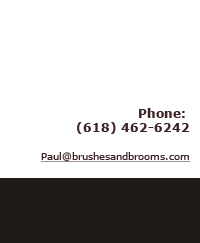 |
Chimney FAQ
Chimney Fire Safety
The Three Levels of Inspection
Chimney Fire Safety
Chimney fires don’t have to happen – Keep the Fire You Want from Starting One You Don’t
Here are some ways to avoid them:
If you realize a chimney fire is occurring, follow these steps:
For more chimney safety tips, visit the Chimney Safety Institute of America.
____________________________________________________________________________________
The Three Levels of Inspection
The National Fire Protection Association (NFPA)’s 211 (Standard for Chimneys, Fireplaces, Vents and Solid Fuel Burning Appliances) is the standard upon which CSIA Certified Chimney Sweeps base their services. This new standard now classifies chimney and venting system inspections into three levels—Level I, Level II or Level III. Each level of inspection has a specific scope of work and specific criteria.
Level I Inspection
This inspection is recommended when the chimney and venting system is easily accessible and when the homeowner is planning to maintain its current use. In general, this the level of inspection performed in most homes. In a Level I inspection a certified chimney sweep verifies that the chimney structure is sound and that the chimney is free of obstructions and combustible deposits, such as creosote.
Level II Inspection
The addition of a new home heating appliance or a change in the type of fuel a homeowner is burning requires a Level II inspection. This inspection level is also required upon the sale or transfer of a property or after an operating malfunction or external event that is likely to have caused damage to the chimney. The scope of a Level II inspection includes that of the Level I inspection plus the inspection of accessible portions of the attics, crawl spaces and basements. It may also include a performance test such as a smoke test or a pressure test and possibly an interior chimney video inspection if recommended by the certified chimney sweep.
Level III Inspection
When a Level I or Level II inspection suggests a hidden hazard and the evaluation cannot be performed without access to concealed areas, a Level III inspection is recommended. This type of inspection confirms the proper construction and condition of concealed portions of the chimney structure and the flue. Level III inspections are generally necessary when investigating an incident that has caused damage to a chimney or building, or where a hazard is detected and suspected.
Both the Chimney Safety Institute of America and the National Fire Protection Association recommend yearly chimney inspections to help prevent fire and carbon monoxide poisonings.
The Three Levels of Inspection
Chimney Fire Safety
Chimney fires don’t have to happen – Keep the Fire You Want from Starting One You Don’t
Here are some ways to avoid them:
- Have your chimney inspected annually by a qualified professional and
cleaned when necessary.
- Use seasoned woods only (dryness is more important than hard wood versus soft
wood considerations)
- Build smaller, hotter fires that burn more completely and produce less smoke.
- Never burn cardboard boxes, wrapping paper, trash or Christmas trees; these can spark a chimney fire.
- Install stovepipe thermometers to help monitor flue temperatures where wood stoves are in use, so you can
adjust burning practices as needed.
- Inspect and clean catalytic combustors on a regular basis, where applicable
If you realize a chimney fire is occurring, follow these steps:
- Get
everyone out of the house, including yourself.
- Call the fire department.
- Put a chimney fire extinguisher into the fireplace or wood stove.
- Close the glass doors
on the fireplace.
- Close the inlets on the wood stove.
- Use a garden hose to spray down the roof (not the chimney) so the fire won’t spread to the rest of the structure.
For more chimney safety tips, visit the Chimney Safety Institute of America.
____________________________________________________________________________________
The Three Levels of Inspection
The National Fire Protection Association (NFPA)’s 211 (Standard for Chimneys, Fireplaces, Vents and Solid Fuel Burning Appliances) is the standard upon which CSIA Certified Chimney Sweeps base their services. This new standard now classifies chimney and venting system inspections into three levels—Level I, Level II or Level III. Each level of inspection has a specific scope of work and specific criteria.
Level I Inspection
This inspection is recommended when the chimney and venting system is easily accessible and when the homeowner is planning to maintain its current use. In general, this the level of inspection performed in most homes. In a Level I inspection a certified chimney sweep verifies that the chimney structure is sound and that the chimney is free of obstructions and combustible deposits, such as creosote.
Level II Inspection
The addition of a new home heating appliance or a change in the type of fuel a homeowner is burning requires a Level II inspection. This inspection level is also required upon the sale or transfer of a property or after an operating malfunction or external event that is likely to have caused damage to the chimney. The scope of a Level II inspection includes that of the Level I inspection plus the inspection of accessible portions of the attics, crawl spaces and basements. It may also include a performance test such as a smoke test or a pressure test and possibly an interior chimney video inspection if recommended by the certified chimney sweep.
Level III Inspection
When a Level I or Level II inspection suggests a hidden hazard and the evaluation cannot be performed without access to concealed areas, a Level III inspection is recommended. This type of inspection confirms the proper construction and condition of concealed portions of the chimney structure and the flue. Level III inspections are generally necessary when investigating an incident that has caused damage to a chimney or building, or where a hazard is detected and suspected.
Both the Chimney Safety Institute of America and the National Fire Protection Association recommend yearly chimney inspections to help prevent fire and carbon monoxide poisonings.
